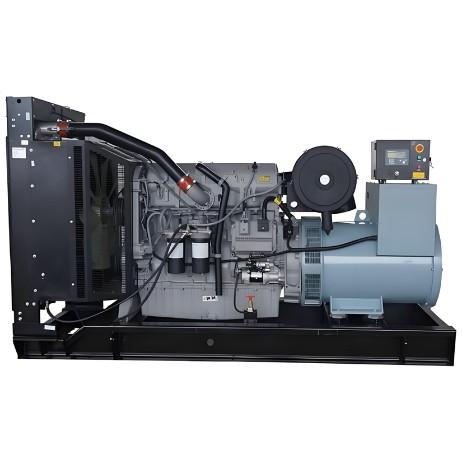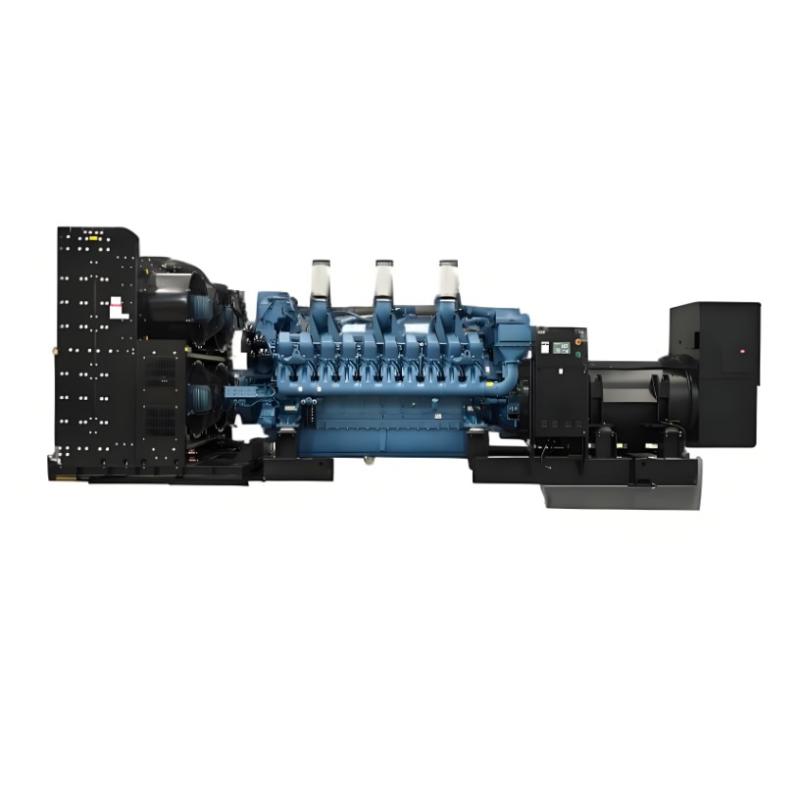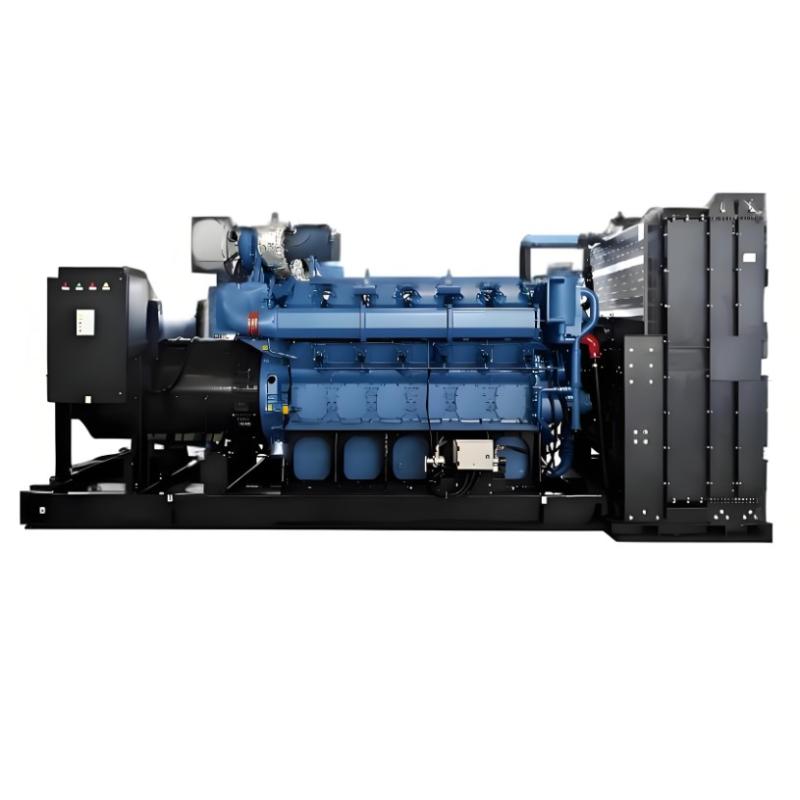Forbairt Chomhchoitianta Gineadóirí agus Córais Cosanta
Raghmhaireacht Forbairtí Gineadóir
Raghmaítear forbairtí gineadóir go príomha i gcothrom le dá chineál:
Is meicniúil atá fadhbanna i mhuinchinn phríomha (mar shampla, iníní deilgeoil, tairbeartáin) agus is le lorg a ndéanann an dearadh éagsúlacht orthu, cé go bhfuil sé riachtanach go dtagann siad le córas cosanta na ngineadóir le haghaidh tuilleadh tríomhla.
Cineálacha Forbairtí Isteach
1. Forbairtí Stator
Tóir Mótar: In ainneoin súlchrúcha gan teorainn nó briseadh clúdach.
Fadhb Idir Phás: Tar éis briseadh clúdach idir phásanna.
Fadhb Idir Phás agus Domhan: Teiteall corra ó phásanna go raon stator.
Fadhb Idir Ciorcail: Comhshracaireacht idir ciorcail gairid sa mhótar céanna.
2. Forbairtí Rotor
Fadhb Domhan: Teiteall corra ó rotaí go dtí an ascaile rótair.
Comhshracaireacht Mótar: Lúdaíonn spéisintín agus méadaíonn corra i mhrótaí mótar.
Tóir: Tá sé bunaithe ar churram neamhchoitianta stator (mar shampla, triomhla pól singil, seicheamh phás diúltach).
3. Fáilte Fiach/Pobal
4. Oibriú As Síntiú
5. Oibriú Mótar
6. Forbairtí Meicniúla
Mód Oibriú Tóir Rótair
Curram neamhchoitianta stator (mar shampla, seicheamh phás diúltach) cuiríonn corra eddy isteach i rótair ag dhá uair an ráta córais (100/120 Hz), ag cruthú tóir áitiúil. Seo a laghdóidh scuaineanna rótair agus faobhair.
Cineálacha Forbairtí Amach
Anormalachtaí Córais Cumhachta
Comhshracaireacht Amach: Fadhbanna ar an líonra a n-affectann oibriú an ghineadóir.
Ceangal Gan Cothrom: Damaíocht ó cheangal míchruinn an ghineadóir.
Súlchrúch/Overspeed: Bunaithe ar shúlchúlaimh go tobann nó meicniúlacht an tseilbh.
Neamhchothromas Phás/Negative Sequence: Cuireann sé corra eddy isteach i rótair agus tóir.
Athraithe Freisin/Voltaí: Uafreisin freisin nó voltaí a chuiríonn strus ar chuid na ngineadóir.
Uirlisí Cosanta Gineadóir
Príomhscéimeanna Cosanta
1. Cosaint Stator
Relay Differenial: Déanann sé aithriche forbairtí idir phás agus idir phás agus domhan tríd churram isteach/ag teacht a chur i gcomparáid.
Cosaint Domhan: Úsáideann sé relais overcurrent (do grounding resistance) nó relais voltaí (do grounding transformer) chun forbairtí ground stator a aithriche.
2. Cosaint Rotor
3. Cosaint Neamhchothromach Lucht Leanúna
4. Cosaint Tóir
5. Cosaint Meicniúil
6. Cosaint Tacaíoch agus Aisteoireachta
Relais power reverse cosanta in aghaidh oibriú motor, agus relais differenial do forbairtí stator earth fault a dhéanann aithriche forbairtí príomha (físeáil Figure 1 do ceanglais chuntúla).
Differential Relays: Déanann sé aithriche forbairtí isteach tríd churram a chur i gcomparáid ag an dá taobh de na windings stator.
Prínciplí Cosanta
Zero-Sequence Voltage Detection: Aithriche forbairtí idir turn tríd chur imbalancanna voltaí faoi smacht tríd transformair voltage (VT).
Grounding System Adaptation: Scéimeanna cosanta athraíonn bunaithe ar bhealaí grounding stator (resistance nó transformer grounding), ag úsáid CTs nó VTs chun curram/voltaí forbairtí a aithriche.

Mód Oibriú Cosanta Forbairtí Mótar Rótair
Forbairtí comhshracaireacht mothar rótair cuiríonn relais overcurrent cosaint orthu, a triomhlóid an t-gineadóir nuair a thagann siad ar ais agus déanann aithriche forbairtí corra neamhchoitianta. Tá forbairtí domhan eile a chuiríonn tionchar ar rotaí, cé go bhfuil a cosaint ag iarraidh modhanna speisialta.
I ngineadóirí teasa móra, tá rotaí nó field windings go príomha ungrounded, rud a chiallaíonn nach féidir le forbairt ground singil a chur ar forbairt corra. Ach, forbraíonn sé seo an réimse iompair an fhoild agus an t-excitear system. Is féidir go mbeadh voltaga breise a chuirfeadh go dtí an foild nó an t-gineadóir príomha - go háirithe le forbairt - a chuiríonn strus ar chlúdach an foild, ag cur air go mbeadh forbairt ground dearmad. Dara forbairt d'fhéadfadh a chur ar tóir ionaid iron, misathrú rótair, agus meicniúlacht neamhchothromach.
Cosaint forbairt domhan rótair úsáideann go minic relay a chuiríonn sealbha AC auxiliary ar an rótair. Níos coitianta, úsáideann sé relay voltaí in series le network high-resistance (go coitianta a chombináil de linear agus non-linear resistors) os comhair an circuit rótair. An pointe lárnach den network seo ceanglaíonn go dtí an talamh trí coil relay sensitíf (ANSI/IEEE/IEC code 64). Tá scéimeanna cosanta nua-aimseartha ag brath ar chombináid de linear agus non-linear resistors chun forbairt a aithriche agus clúdach a monatóir.
Modhanna Cosanta Fáilte Fiach agus Overexcitation
Úsáideann cosaint fáilte fiach relay chun athraithe flow corra réactaiv a aithriche. Scéim chuntúil úsáideann relay Offset Mho (impedance) - a single-phase device supplied by generator current transformers (CTs) and voltage transformers (VTs) - to measure load impedance. The relay triggers when the impedance falls within its operating characteristic. A timing relay initiates generator tripping if leading reactive power persists for 1 second (standard timing).
Overexcitation Protection
To prevent core saturation during startup and shutdown, overexcitation protection (ANSI/IEEE/IEC code 59) is implemented, based on the relationship:B = V/f
where:
B = magnetic flux density (tesla, T)
V = applied voltage (volts, V)
f = frequency (hertz, Hz)
Core flux must stay below the saturation point, meaning voltage can only increase proportionally with frequency (speed). Rapid excitation increases risk overexcitation, detected by Volts per Hertz relays. These relays feature linear characteristics and trip when V/f exceeds set thresholds.
Stator and Rotor Overheating Protection
Stator Windings & Bearings: Temperature monitoring via resistance temperature detectors (RTDs) and thermistors.
Stator Phase Unbalance: Time-inverse overcurrent relays set to the rotor’s maximum heat tolerance.
Negative Phase Sequence Protection: Shields the machine from rotor overheating caused by unbalanced stator currents, which induce damaging eddy currents in the rotor.
Reliable protection systems are critical to minimize damage and repair time, as generators are among the most expensive power system components.

This protection utilizes a relay that compares currents in two phases via current transformers (CTs), as illustrated in Figure 2. The protective settings are determined by the maximum time the rotor can endure overheating, defined by the equation K = I²t (derived from Joule's law), where I is the negative sequence current and t is the duration.
Manufacturer-specified typical time-current curves for this condition vary based on the prime mover type, as shown in the referenced diagram.

Reverse Power, Out-of-Step, and Frequency/Voltage Protection Systems
Reverse Power Protection (ANSI/IEEE/IEC Code 32)
This protection employs a power directional relay to monitor generator load, supplied by CTs and VTs (see Figure 3). The relay activates upon detecting negative power flow—indicating the generator is drawing power from the grid (motor operation)—and triggers tripping to prevent turbine damage.
Out-of-Step Protection
Designed to detect power system disturbances (not generator faults), this protection identifies pole slipping when the generator loses synchronism. It trips the generator breakers while keeping the turbine running, allowing re-synchronization after the disturbance clears.
Frequency and Voltage Protection
Under/Over Frequency Protection (ANSI/IEEE/IEC Code 81)
Overfrequency: Caused by sudden load shedding, risking overvoltage if not managed. Generator controls must adjust output to match demand.
Underfrequency: Results from insufficient generation for connected loads, leading to voltage drops, increased excitation, and rotor/stator overheating. Load shedding is critical to prevent system collapse.
Under/Over Voltage Relays (Codes 27/59)
Monitor and control voltage deviations to protect equipment from stress or damage.
Phase Supplementary Start Protection
Prevents starting the generator into a fault or loaded condition. Low-set overcurrent relays engage only when frequency is below 52 Hz (for 60 Hz systems) or 42 Hz (for 50 Hz systems), ensuring protection during startup transients.
External Short-Circuit Protection
Overcurrent relays (50, 50N, 51, 51N) detect and clear faults on the external network, safeguarding the generator from excessive fault currents.
These protection schemes collectively address operational anomalies—from power flow reversals to system-wide disturbances—ensuring generator integrity and grid stability.
























